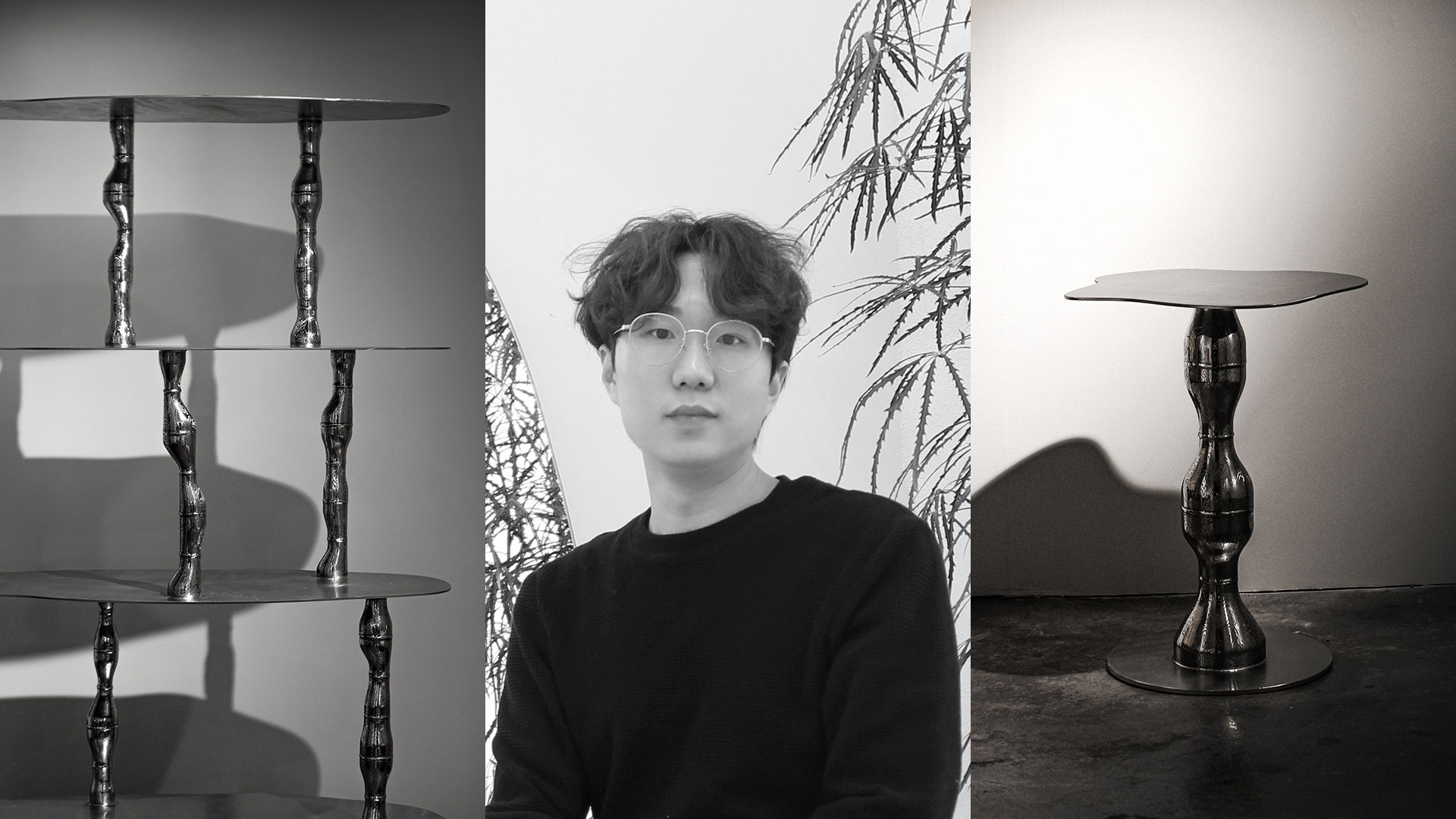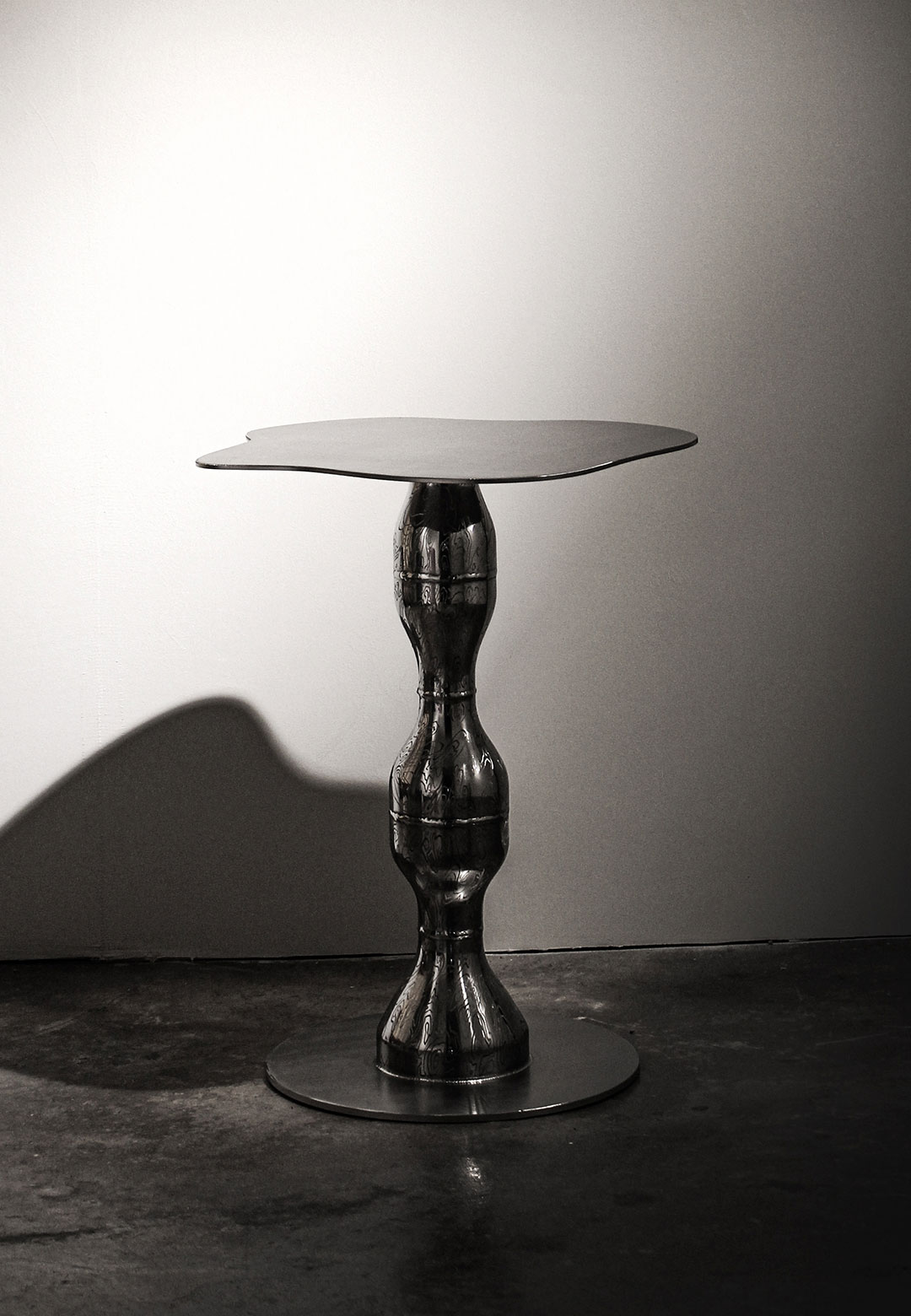In a world dictated by mass production chains and rampant consumerism, how can intentionally and inventively designed industrial products find their place?
South Korean metalworker and sculptural artist Hyungjun Lee is ever-inspired by enquiries such as these, about the longevity and existential worth of materials and the objects carved out of them. These questions remain at the back of his mind, prompting him to immerse himself in the reconstruction of materials while envisioning a larger channel of designing and producing, where manufactured parts transform into distinctive and essential objects in themselves. The product designer's process entails investigating creative outlets such as interacting with art while staying in close proximity to nature. This is further augmented by his adherence to a philosophical goal, of reassessing the presence and visibility of nature, and the frequently undervalued, spiritual components within modern society. This way, Lee is able to subtly yet intentionally colligate his artistic inclinations with philosophical inquiries within his work.
In his latest collection of furniture and lighting designs titled Pipe Fitting Series, Lee transforms basic and primary pipe components into valuable objects. Commenting on the design process for the clinically clean series, the Seoul-based artist relays, “(by) staking up pipe fittings of different shapes and curves, you find the beauty that comes from the silhouette itself. At the same time, you can also feel parts of nature that go against the characteristics of a cold metal. The shape of a pipe fitting extending into several branches combines with (my) craftsmanship, recalling nature's heavy and strong presence, like the shape of an old pine tree. Artificial materials made by artificial processes are reborn with strong vitality.”
"Looking at industrial products produced in large quantities in modern times, we have doubts about their sustainability and value. Artifacts are made to standard standards and quickly made by machines. They are eventually consumed and discarded as quickly as they are born—where does this cycle end? This question inspired me, and so I began a journey to find the value of their existence, by imagining the moment when industrial parts produced in factories become unique works of art in themselves," the designer reiterates.
The Pipe Fitting Series comprises a mix of idiosyncratic pieces, from shelves to stools and lamp designs made from stainless steel. These are created as an abstraction of a tree striving to reach towards the sky but facing obstructions that stunt its growth. “Pipe fittings are industrial parts that change the flow of fluid. Things produced in factories were thought to be lifeless, but it was interesting that pipe fittings had characteristics and shapes similar to trees,” the sculptor says.
The furniture designer based in South Korea believes that since the Industrial Revolution, mass production became the norm because of the advent and consequential use of machinery. Cities started to take shape according to industrial factories and allied systems which focused on speed and efficiency. The introduction of automated factories accelerated production, and revenues soared. But this time period also brought about the 'age of the square,' wherein nature was manipulated, rarefied, and isolated.
Referentially, Lee places squares and rectangles throughout the Pipe Fitting Series, symbolising the way rapid industrialisation impeded the growth of nature. The objects thus represent the unstable, contrasting coexistence between these square-shaped artificial objects and their vitality resembling the form of a tree. “By constructing square structures within nature, it aims to symbolise our interruption of the natural flow, as if we are building squared structures within nature itself,” he continues.
Lee addresses the importance of sustainability in this lighting and furniture design collection by giving new meaning to discarded pipe fittings. Explaining his sustainable design approach, the designer shares how mass-produced, industrial parts found an artistic revival, in a way where they were not consumed too quickly. "Industrial parts are connected, to be reborn as works, and the completed piece will be seen and used by users for a long time, placed in space, and semi-permanently with humans. I will also continue to find other materials that are consumed and disappear, and use them as materials for my work,” he promises.
Through his transformative and considerate vision, Lee raises common, often disregarded pipe parts into works of art and design. Through contemporary design, the Pipe Fitting Series represents how nature grapples to peacefully exist in the face of unrestrained human interference. Through Lee's work, consumers are encouraged to reconsider the value of materials and adopt a more robust and considerate design philosophy.
Lee's inventive product designs also enthuses a shift in the way we perceive objects in the modern world, where they come from, and what place they manage to carve for themselves, while re-evaluating the relationship we have with the natural world, with design as a key catalyst in upholding and mending it.






 Sign in with email
Sign in with email










What do you think?